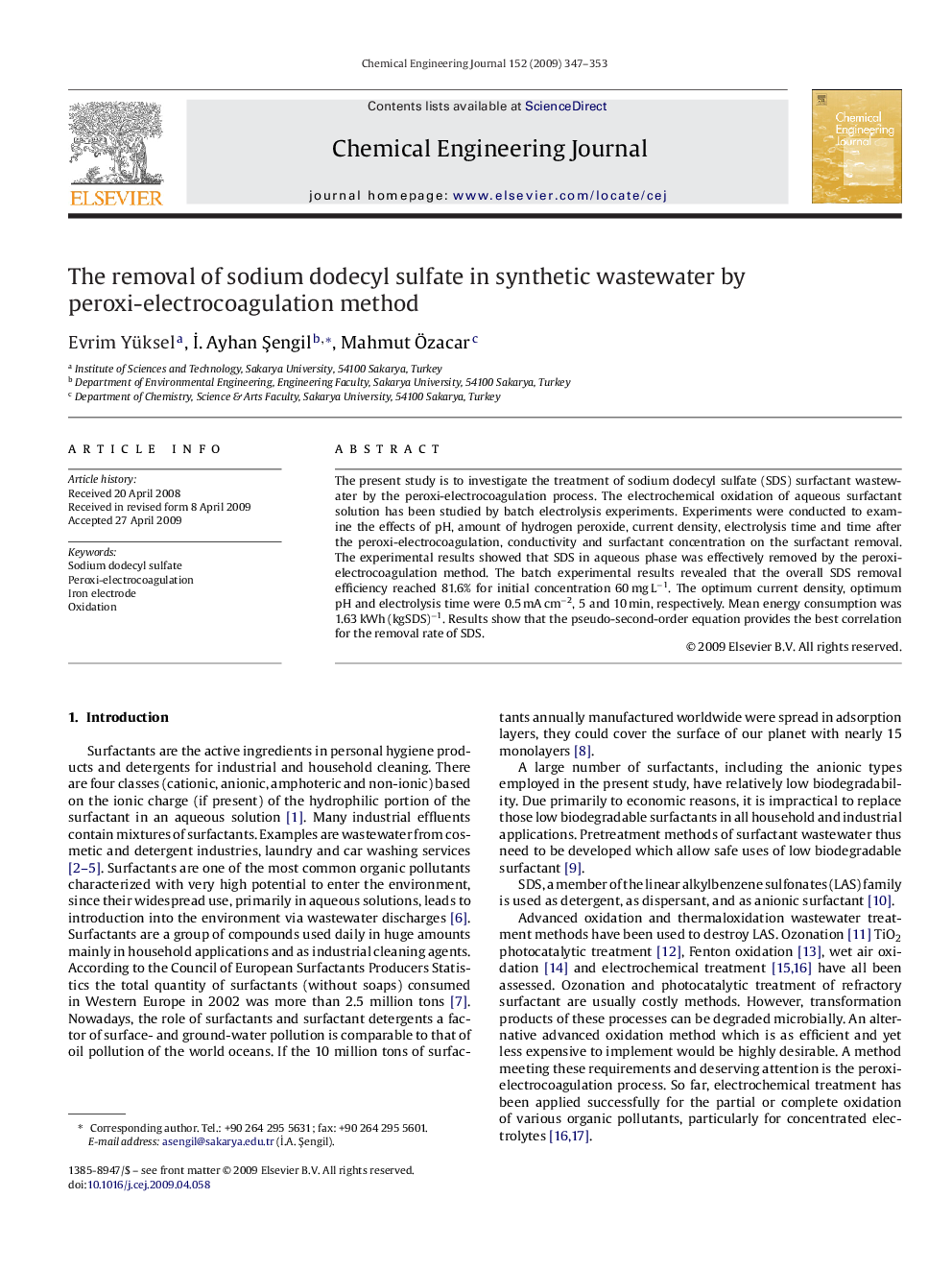| Article ID | Journal | Published Year | Pages | File Type |
|---|---|---|---|---|
| 152118 | Chemical Engineering Journal | 2009 | 7 Pages |
The present study is to investigate the treatment of sodium dodecyl sulfate (SDS) surfactant wastewater by the peroxi-electrocoagulation process. The electrochemical oxidation of aqueous surfactant solution has been studied by batch electrolysis experiments. Experiments were conducted to examine the effects of pH, amount of hydrogen peroxide, current density, electrolysis time and time after the peroxi-electrocoagulation, conductivity and surfactant concentration on the surfactant removal. The experimental results showed that SDS in aqueous phase was effectively removed by the peroxi-electrocoagulation method. The batch experimental results revealed that the overall SDS removal efficiency reached 81.6% for initial concentration 60 mg L−1. The optimum current density, optimum pH and electrolysis time were 0.5 mA cm−2, 5 and 10 min, respectively. Mean energy consumption was 1.63 kWh (kgSDS)−1. Results show that the pseudo-second-order equation provides the best correlation for the removal rate of SDS.
